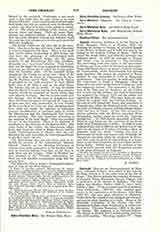

Szanto (ARATOR), STEPHAN, b. in the Diocese of Raab, Hungary, 1541; d. at Olmutz, 1612. On finishing his studies in Vienna, he attached himself to the Diocese of Raab, and in 1560 was sent by his bishop to the German College at Rome. Here he joined the Jesuit Order, and after his novitiate was ordained priest. In 1566 he returned to Vienna, and thence went as professor to Nagy-Szomb.t. The succeeding years were spent at the universities of Vienna and Graz, where he lectured on philosophy. From 1568 Sztint6 strove to found a Catholic mission for Transylvania, where Protestantism was making great headway; this project he continued in Rome, whither he was summoned in 1579 as Hungarian penitentiary. This last position he held until 1579. His endeavors to found a Hungarian college in Rome after the model of the German College met with but temporary success. The monastery of the Hermits of St. Paul near St. Stephen’s on the Coelian was to serve for this purpose; the deed of foundation was approved by Gregory XIII and the college was opened on May 28, 1579. The pope, however, soon united the college with the German College. At the end of 1579 Szdntb left Rome, and proceeded to Transylvania, where he displayed great activity in the work of Catholic missions at Klausenburg (Kolozsvitr) and later at Varad. At this time occurred his literary polemics with the Reform preacher, Peter Beregszaszi, against whom he wrote his “Epistola apologetica”. In 1585 Szant6 proceeded to Gyula-Fehorver and thence, on the expulsion of the Jesuit Order from Transylvania, to Sellye. In 1600 he went to Zniovziralja, and in 1605, on the destruction of this place by the troops of Boeskay, to Olmutz, where he remained until his death. During the siege of Zniovaralja his books and manuscripts, including the Hungarian catechism which he composed in Rome, were lost; until his death he was working on a translation of the New Testament, which was later used by Georg Kaldy. Szant6 must also be credited, as has been recently proved, with the Hungarian portion of the great dictionary of Calepino.
A. ALDASY

